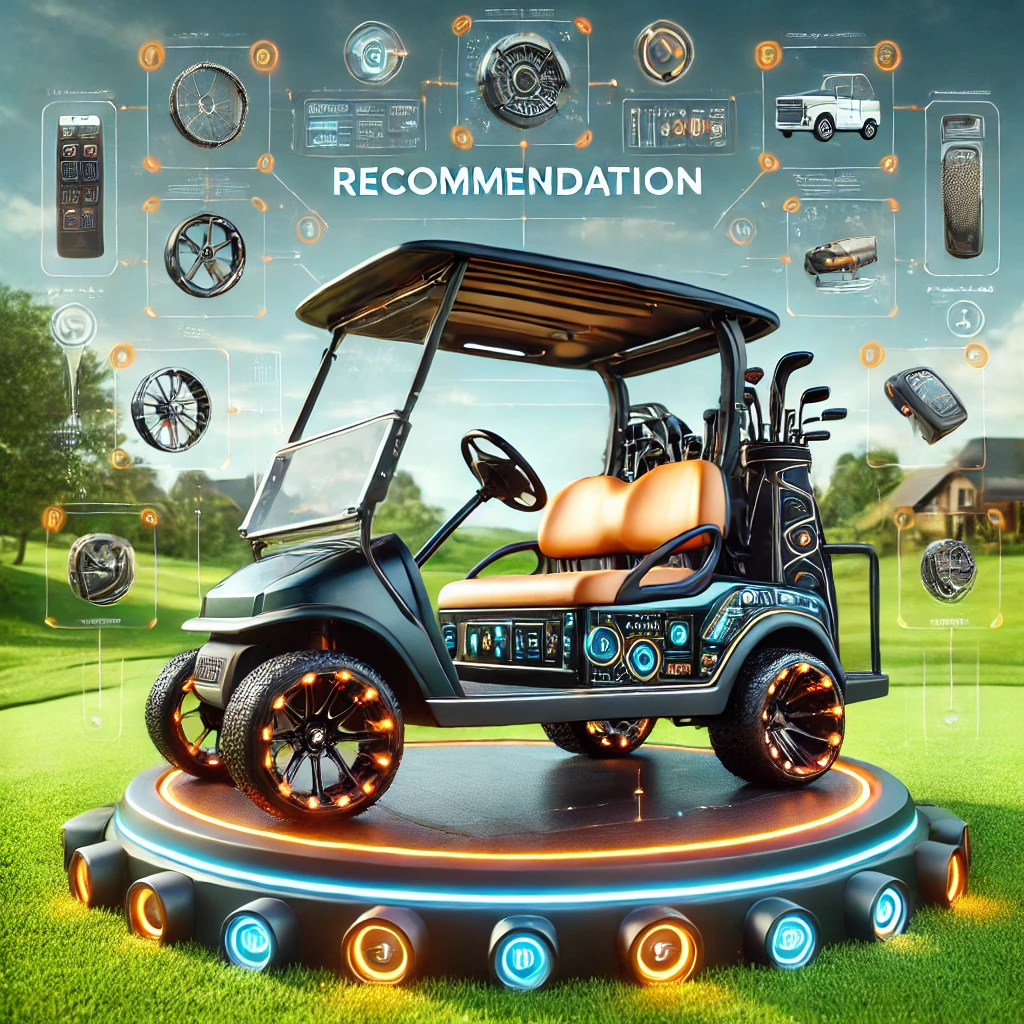Ultimate Guide to My Golf Cart Won't Go But Is Fully Charged 2024 - Find the Best Deals
Brief Introduction
Experiencing a fully charged golf cart that won't go can certainly be frustrating. As a golf cart owner, it's common to encounter these issues, but what do you do when it seems fully powered, yet refuses to move? Understanding the intricacies of why a "my golf cart won't go but is fully charged" situation occurs is essential for golf cart maintenance and troubleshooting. This guide provides an in-depth look at potential causes, solutions, and the best products available to address this issue.
What is My Golf Cart Won't Go But Is Fully Charged?
"My golf cart won't go but is fully charged" describes a common problem where a golf cart, though fully charged, fails to function. This issue can stem from various components within the golf cart's electrical system, such as the battery connections, solenoid, controller, and motor. Resolving such issues requires careful examination and possibly replacement of faulty components.
Key features of addressing this problem include checking:
- Battery connections and integrity.
- Solenoid functionality.
- Controller responsiveness.
- Motor health and wiring.
Historically, golf carts have evolved from basic vehicles to sophisticated machines with intricate electrical systems. Understanding this progression helps in identifying and troubleshooting modern problems.
Types of My Golf Cart Won't Go But Is Fully Charged
Different issues can cause a fully charged golf cart not to go. Here are some common types:
-
Battery Issues
- Features: Problems often stem from corroded terminals or faulty connections.
- Pros: Relatively inexpensive to fix.
- Cons: Requires regular maintenance to prevent recurrence.
-
Solenoid Failures
- Features: The solenoid is a switch that allows electric current to reach the motor.
- Pros: Can be replaced easily, and costs are moderate.
- Cons: Requires diagnostic skills to identify as the root cause.
-
Controller Malfunctions
- Features: This component controls the speed and acceleration of the golf cart.
- Pros: Advanced control can improve efficiency.
- Cons: Replacement can be costly and complicated.
-
Motor Problems
- Features: The motor drives the wheels.
- Pros: Replacement can greatly enhance performance.
- Cons: Can be the most expensive and complex part to repair or replace.
How to Choose the Best My Golf Cart Won't Go But Is Fully Charged
When selecting components or services to resolve a fully charged golf cart that won't go, consider the following factors:
- Diagnosis: Properly identifying the root cause is crucial.
- Quality of Components: Use high-quality, reliable parts to ensure longevity.
- Expertise: Depending on the complexity of the issue, professional help may be required.
- Cost: Balance between quality and affordability.
- Warranty: Opt for parts and services that come with a warranty for peace of mind.
Tips for an informed purchase decision:
- Read customer reviews and ratings.
- Compare different products and services.
- Seek recommendations from trusted sources.
Top Amazon Products for My Golf Cart Won't Go But Is Fully Charged
Here are our top picks from Amazon to address the issue:
Benefits of Using My Golf Cart Won't Go But Is Fully Charged
Addressing and resolving this issue offers several benefits:
- Reliability: Ensures your golf cart is dependable.
- Efficiency: Enhances overall performance.
- Safety: Minimizes risk of getting stranded.
- Longevity: Regular maintenance prevents wear and tear.
Real-life examples:
- A golf club used regular maintenance kits to prevent battery and solenoid issues, reducing downtime.
- An individual user reported increased performance after replacing the speed controller.
How to Use My Golf Cart Won't Go But Is Fully Charged Effectively
Follow these steps:
- Safety First: Disconnect the battery before any inspection.
- Visual Inspection: Check battery terminals and wiring.
- Test Components: Use a multimeter for the battery, solenoid, and controller.
- Replace Faulty Parts: Ensure you use high-quality replacements.
- Regular Maintenance: Clean and inspect regularly.
Common mistakes:
- Ignoring corrosion.
- Overlooking professional help.
- Using low-quality components.
FAQs about My Golf Cart Won't Go But Is Fully Charged
Q1: What should I check first?
- Start with the battery connections.
Q2: How do I test the solenoid?
- Use a multimeter to check for continuity.
Q3: Can I replace components myself?
- Yes, but ensure you have the right tools and follow safety protocols.
Key Takeaways
Understanding why a fully charged golf cart won't go involves a step-by-step troubleshooting process focusing on essential components like the battery, solenoid, controller, and motor. Invest in quality parts, maintain regular checks, and don't hesitate to seek professional help when needed. Whether you’re looking for affordable solutions or premium options, using reputable sources ensures long-term benefits and safety.
References:
- Carts and Parts. Common Golf Cart Issues and How to Fix Them.
- Golf Cart Resource. Golf Cart Repair.
- Amazon Customer Reviews.
(Include hyperlinks to the cited resources for user convenience and credibility.)
By following this comprehensive guide, you can ensure your golf cart remains in top condition and enjoy a smooth, problem-free ride.



